Interactions
An Interaction is a workflow, exposed as an API endpoint, which you can executed though a simple API call.
Each interaction is composed of multiple Tasks which you can execute in the order you specify in the interaction.
The tasks can be configured with the input provided by the user or the output of the preceding tasks. You can use any of the existing tasks or create your own with custom code.
Each interaction is executed in a Session which is a single execution of the workflow.
You can use (call) interactions as API endpoints to execute workflows.
Worth mentioning, interactions are massively scalable and based on your plan, can be called tens of thousands of times per minute!
Creating an Interaction
To create an Interaction click the + New Interaction button to go to the Interaction Canvas where you can create workflows you can use as API endpoints.
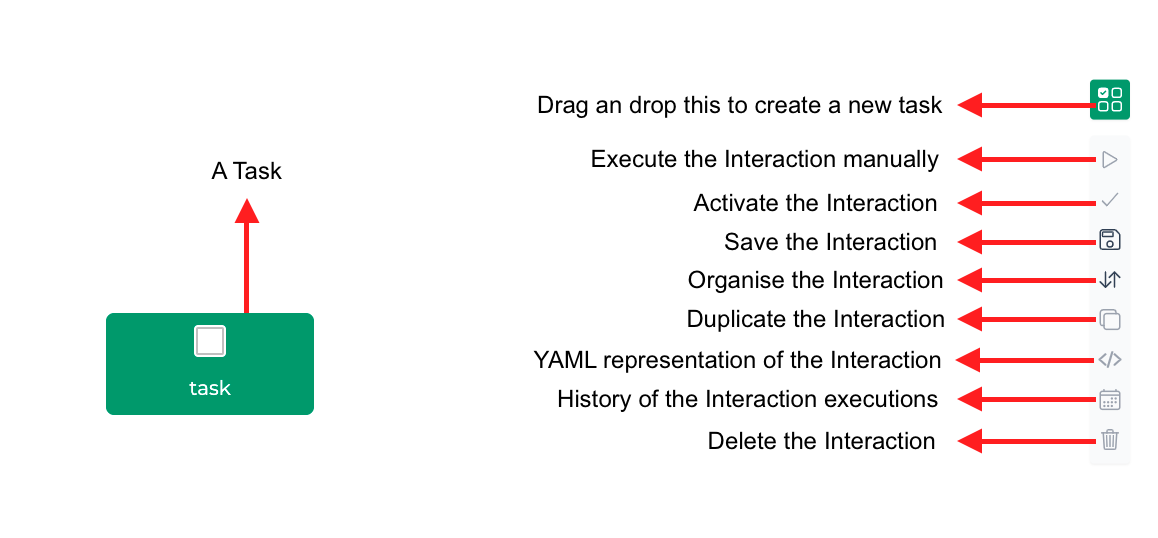
Interaction tasks
An Interaction can be comprised of a single task or multiple tasks. The tasks can depend on other tasks or execute as soon as the interaction is executed. This means that you can run multiple tasks in parallel (this feature, if used correctly, gives you a unique performance advantage).
You can add a task to the interaction by dragging and dropping it to the canvas and you can delete it by right-clicking on the task and clicking on the delete option.
When you add a task to the interaction, you can select the type of the task and based on that you can configure the task.
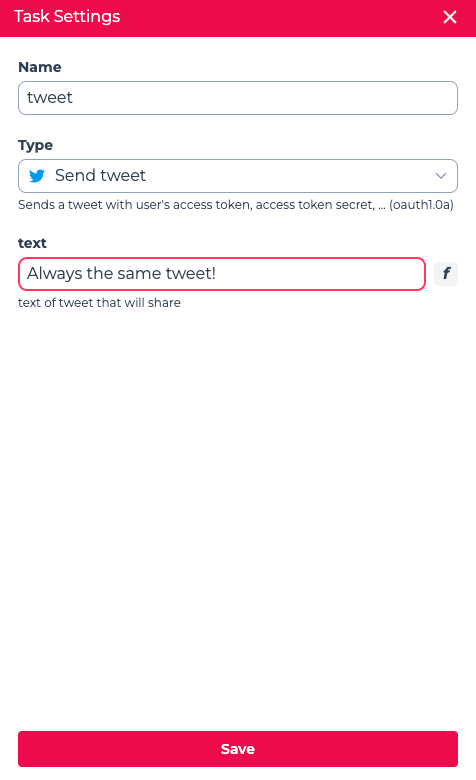
In the above example, you can see the task of type "Send tweet" accepts only a single value, text which is the text of the tweet. You can set a value for field which will always be used when this task is executed in this interaction, or in the more likely case, you can leave it blank to set it value dynamically when you want to execute this interaction. It's also possible to set a value for some attributes of the tasks and leave some of them blank.
Dependency between the tasks
You can create a dependency relation between on task with multiple tasks by connecting them and setting the dependency condition.
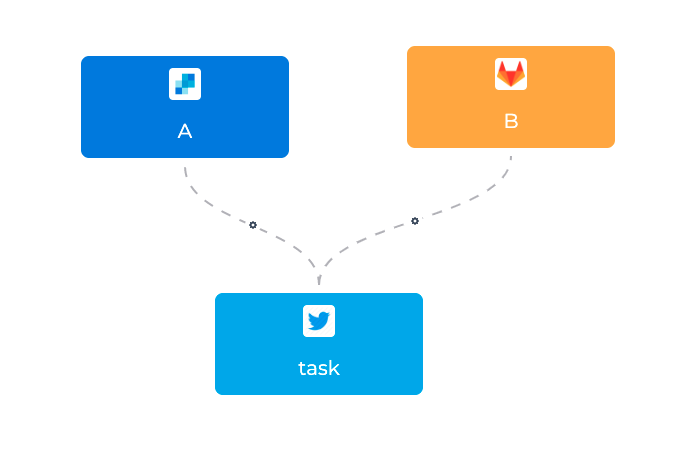
In the above image, the tasks A and B run in parallel as soon as the interaction's execution has started and the task C starts when both of those tasks
are completed.
In order to set the condition of dependency, click on the cog on the link between two tasks and select the the condition as follow:
failed: the preceding task should fail to run this taskcompleted: the preceding task should complete successfully to run this task
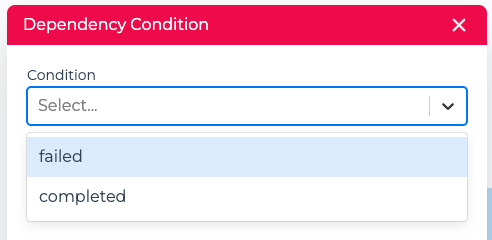
Executing an Interaction
Before executing an interaction, make sure it's activated.
In the list of the interactions click on the endpoint to get the details of the HTTP request you should send run this interaction. In the endpoint you automatically get the body of the request based on the blank inputs of the tasks in the interaction.
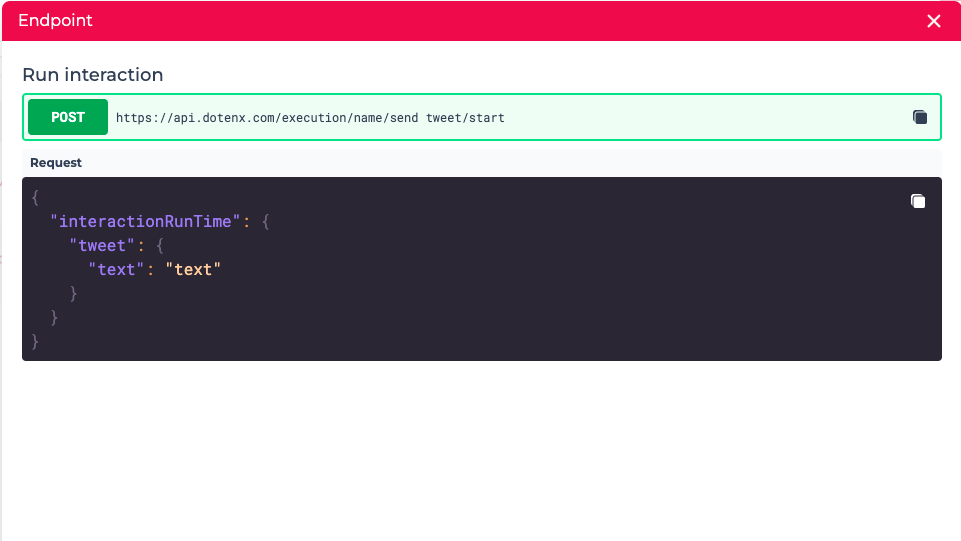
Authorization
All the interaction endpoints are protected, meaning you have to provide a valid Authorization token when calling the endpoint. You get this token in the body of the response of a request to the login endpoint which has been successful. For more details refer to the User management section.
Integration and Provider
Some tasks need a provider to work. For example, if you want to use the "Send tweet" task, you need a user integration which is crated with your Twitter provider.
This section will be completed soon.